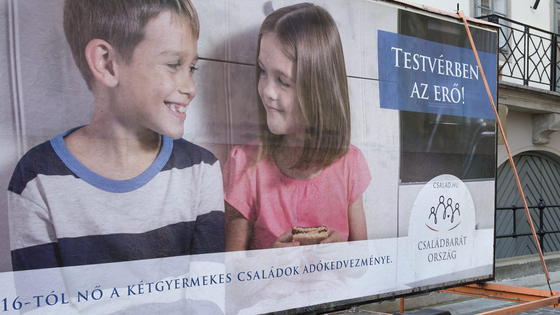[{“available”:true,”c_guid”:”8d6036c5-5007-44f6-a9d2-12e43658d8b2″,”c_author”:”hvg.hu”,”category”:”gazdasag”,”description”:”Misál el-Ahmad al-Dzsábir Ál Szabáh decemberben lépett trónra, az előző parlamentet feloszlatta, az újat még első ülése előtt felfüggesztette.”,”shortLead”:”Misál el-Ahmad al-Dzsábir Ál Szabáh decemberben lépett trónra, az előző parlamentet feloszlatta, az újat még első ülése…”,”id”:”20240511_kuvait-emir-parlament-felfuggesztes-korrupcio”,”image”:”https://img.hvg.hu/Img/ffdb5e3a-e632-4abc-b367-3d9b3bb5573b/8d6036c5-5007-44f6-a9d2-12e43658d8b2.jpg”,”index”:0,”item”:”866b46cf-d2e6-4a84-ade1-be60155176ac”,”keywords”:null,”link”:”/gazdasag/20240511_kuvait-emir-parlament-felfuggesztes-korrupcio”,”timestamp”:”2024. május. 11. 21:57″,”title”:”A korrupcióra hivatkozva felfüggesztette a parlamentet a kuvaiti emír”,”trackingCode”:”RELATED”,”c_isbrandchannel”:false,”c_isbrandcontent”:false,”c_isbrandstory”:false,”c_isbrandcontentorbrandstory”:false,”c_isbranded”:false,”c_ishvg360article”:false,”c_partnername”:null,”c_partnerlogo”:”00000000-0000-0000-0000-000000000000″,”c_partnertag”:null},{“available”:true,”c_guid”:”b82980c8-998c-4dae-a557-7b07a69c70e8″,”c_author”:”hvg.hu”,”category”:”360″,”description”:”Egyszerűvé, sugárterhelés nélkülivé teheti a tüdőrák szűrését amerikai kutatók új módszere.”,”shortLead”:”Egyszerűvé, sugárterhelés nélkülivé teheti a tüdőrák szűrését amerikai kutatók új módszere.”,”id”:”20240510_hvg-tudoszures-vizeletvizsgalattal-sugarterheles-nelkul-ct-tudorak-felismerese”,”image”:”https://img.hvg.hu/Img/ffdb5e3a-e632-4abc-b367-3d9b3bb5573b/b82980c8-998c-4dae-a557-7b07a69c70e8.jpg”,”index”:0,”item”:”b2f3a467-e930-46d9-b937-3e44fec5fe6e”,”keywords”:null,”link”:”/360/20240510_hvg-tudoszures-vizeletvizsgalattal-sugarterheles-nelkul-ct-tudorak-felismerese”,”timestamp”:”2024. május. 13. 14:00″,”title”:”CT helyett egy 20 perces vizeletvizsgálattal kimutatható lehet a tüdőrák”,”trackingCode”:”RELATED”,”c_isbrandchannel”:false,”c_isbrandcontent”:false,”c_isbrandstory”:false,”c_isbrandcontentorbrandstory”:false,”c_isbranded”:false,”c_ishvg360article”:true,”c_partnername”:null,”c_partnerlogo”:”00000000-0000-0000-0000-000000000000″,”c_partnertag”:null},{“available”:true,”c_guid”:”f4083493-1d00-4bec-ae03-21c9e06543c3″,”c_author”:”hvg.hu”,”category”:”cegauto”,”description”:”Az alig pár éve feltámasztott GTX típusjelzés már nem sokáig feszít majd a Volkswagenek hátulján.”,”shortLead”:”Az alig pár éve feltámasztott GTX típusjelzés már nem sokáig feszít majd a Volkswagenek hátulján.”,”id”:”20240513_meglepo-huzas-a-vw-tol-jonnek-a-gti-es-r-villanyautok”,”image”:”https://img.hvg.hu/Img/ffdb5e3a-e632-4abc-b367-3d9b3bb5573b/f4083493-1d00-4bec-ae03-21c9e06543c3.jpg”,”index”:0,”item”:”3a4e889f-a184-476f-9f08-e3206a9c4bd5″,”keywords”:null,”link”:”/cegauto/20240513_meglepo-huzas-a-vw-tol-jonnek-a-gti-es-r-villanyautok”,”timestamp”:”2024. május. 13. 07:59″,”title”:”Meglepő húzás a VW-től: jönnek a GTI és R villanyautók”,”trackingCode”:”RELATED”,”c_isbrandchannel”:false,”c_isbrandcontent”:false,”c_isbrandstory”:false,”c_isbrandcontentorbrandstory”:false,”c_isbranded”:false,”c_ishvg360article”:false,”c_partnername”:null,”c_partnerlogo”:”00000000-0000-0000-0000-000000000000″,”c_partnertag”:null},{“available”:true,”c_guid”:”d96affaa-2258-4446-8e4d-64ec0346bfc3″,”c_author”:”Bábel Vilmos”,”category”:”itthon”,”description”:”\”Büszke mindkét nemzet!\””,”shortLead”:”\”Büszke mindkét nemzet!\””,”id”:”20240512_orban-viktor-elmagyarazza-miert”,”image”:”https://img.hvg.hu/Img/ffdb5e3a-e632-4abc-b367-3d9b3bb5573b/d96affaa-2258-4446-8e4d-64ec0346bfc3.jpg”,”index”:0,”item”:”a91e4dc6-3dda-43f3-927f-36749165af69″,”keywords”:null,”link”:”/itthon/20240512_orban-viktor-elmagyarazza-miert”,”timestamp”:”2024. május. 12. 15:35″,”title”:”Orbán Viktor elmagyarázza, miért ne fájjon a szívünk azon, hogy a Liu-testvérek Kínába igazoltak”,”trackingCode”:”RELATED”,”c_isbrandchannel”:false,”c_isbrandcontent”:false,”c_isbrandstory”:false,”c_isbrandcontentorbrandstory”:false,”c_isbranded”:false,”c_ishvg360article”:false,”c_partnername”:null,”c_partnerlogo”:”00000000-0000-0000-0000-000000000000″,”c_partnertag”:null},{“available”:true,”c_guid”:”ccd4e10c-40d8-42fd-92d3-e6339fc298d3″,”c_author”:”Generali”,”category”:”brandcontent”,”description”:”Hogyan tudják a családban a felnőttek a felelősségteljes, előre tervező öngondoskodás mintáját átadni a gyerekeknek úgy, hogy az pozitív példaként álljon előttük? Milyen megküzdési stratégiákkal biztosítsuk be magunkat a mindennapokban? Podcastunkban többek között ezekre a kérdésekre keressük a választ Dr. Belső Nóra pszichiáterrel.”,”shortLead”:”Hogyan tudják a családban a felnőttek a felelősségteljes, előre tervező öngondoskodás mintáját átadni a gyerekeknek…”,”id”:”20240513_megkuzdesi-strategiak-csaladi-mintak-pszichologia-dr-belso-nora-podcast”,”image”:”https://img.hvg.hu/Img/ffdb5e3a-e632-4abc-b367-3d9b3bb5573b/ccd4e10c-40d8-42fd-92d3-e6339fc298d3.jpg”,”index”:0,”item”:”e5b664ca-1280-4e8f-937d-4081a76ef6d1″,”keywords”:null,”link”:”/brandcontent/20240513_megkuzdesi-strategiak-csaladi-mintak-pszichologia-dr-belso-nora-podcast”,”timestamp”:”2024. május. 13. 12:30″,”title”:”\”Saját megküzdési stratégiáinkból és mintáinkból építjük fel személyes védőhálónkat\””,”trackingCode”:”RELATED”,”c_isbrandchannel”:false,”c_isbrandcontent”:true,”c_isbrandstory”:false,”c_isbrandcontentorbrandstory”:true,”c_isbranded”:true,”c_ishvg360article”:false,”c_partnername”:null,”c_partnerlogo”:”00000000-0000-0000-0000-000000000000″,”c_partnertag”:null},{“available”:true,”c_guid”:”c3a68a3d-647e-4e71-a09e-5a2d92dc0789″,”c_author”:”hvg.hu”,”category”:”tudomany”,”description”:”Francia és amerikai kutatók kísérlete alapján úgy tűnik, életképes megoldás lehet egy fúziós reaktorban volfrámot használni. Mindez újabb lépéssel vitte közelebb az emberiséget a korlátlan energiához.”,”shortLead”:”Francia és amerikai kutatók kísérlete alapján úgy tűnik, életképes megoldás lehet egy fúziós reaktorban volfrámot…”,”id”:”20240513_fuzios-reaktor-fuzios-eromu-korlatlan-energiatermeles-volfram-hidrogen-plazma-fuzios-reakcio”,”image”:”https://img.hvg.hu/Img/ffdb5e3a-e632-4abc-b367-3d9b3bb5573b/c3a68a3d-647e-4e71-a09e-5a2d92dc0789.jpg”,”index”:0,”item”:”2abc5d75-f637-479e-97d2-bea96f9dfbd3″,”keywords”:null,”link”:”/tudomany/20240513_fuzios-reaktor-fuzios-eromu-korlatlan-energiatermeles-volfram-hidrogen-plazma-fuzios-reakcio”,”timestamp”:”2024. május. 13. 19:03″,”title”:”Bekapcsolták a mesterséges Napot, 6 percig 50 000 000 Celsius-fok volt benne”,”trackingCode”:”RELATED”,”c_isbrandchannel”:false,”c_isbrandcontent”:false,”c_isbrandstory”:false,”c_isbrandcontentorbrandstory”:false,”c_isbranded”:false,”c_ishvg360article”:false,”c_partnername”:null,”c_partnerlogo”:”00000000-0000-0000-0000-000000000000″,”c_partnertag”:null},{“available”:true,”c_guid”:”0832bab4-6402-4f15-9431-59fd4df0c3a7″,”c_author”:”hvg.hu”,”category”:”tudomany”,”description”:”Bizalmas adatok kerülhettek rossz kezekbe egy, a Dellt érintő adatszivárgási ügy során.”,”shortLead”:”Bizalmas adatok kerülhettek rossz kezekbe egy, a Dellt érintő adatszivárgási ügy során.”,”id”:”20240512_dell-adatszivargas-kibertamadas”,”image”:”https://img.hvg.hu/Img/ffdb5e3a-e632-4abc-b367-3d9b3bb5573b/0832bab4-6402-4f15-9431-59fd4df0c3a7.jpg”,”index”:0,”item”:”a945cfab-2cbe-48e4-a4e4-750b33159cf5″,”keywords”:null,”link”:”/tudomany/20240512_dell-adatszivargas-kibertamadas”,”timestamp”:”2024. május. 12. 20:03″,”title”:”49 millió ember adata szivárgott ki”,”trackingCode”:”RELATED”,”c_isbrandchannel”:false,”c_isbrandcontent”:false,”c_isbrandstory”:false,”c_isbrandcontentorbrandstory”:false,”c_isbranded”:false,”c_ishvg360article”:false,”c_partnername”:null,”c_partnerlogo”:”00000000-0000-0000-0000-000000000000″,”c_partnertag”:null},{“available”:true,”c_guid”:”1db233f7-0355-49ec-a664-62e5e2911c39″,”c_author”:”hvg.hu”,”category”:”gazdasag”,”description”:”Orbán több magyar sajtótermék ellen indított pert, mert azok szemléztek egy interjút a SPAR magyarországi vezetőjével. A miniszterelnököt egy, Kötter Tamás megafonos influenszerhez és Tuzson Bence igazságügyi miniszterhez köthető ügyvédi iroda képviseli. “,”shortLead”:”Orbán több magyar sajtótermék ellen indított pert, mert azok szemléztek egy interjút a SPAR magyarországi vezetőjével…”,”id”:”20240513_orban-viktor-pert-vesztett-az-indexszel-szemben”,”image”:”https://img.hvg.hu/Img/ffdb5e3a-e632-4abc-b367-3d9b3bb5573b/1db233f7-0355-49ec-a664-62e5e2911c39.jpg”,”index”:0,”item”:”21ad0767-6134-4b88-974e-a51caa4b8b04″,”keywords”:null,”link”:”/gazdasag/20240513_orban-viktor-pert-vesztett-az-indexszel-szemben”,”timestamp”:”2024. május. 13. 15:19″,”title”:”Orbán Viktor pert vesztett az Indexszel szemben”,”trackingCode”:”RELATED”,”c_isbrandchannel”:false,”c_isbrandcontent”:false,”c_isbrandstory”:false,”c_isbrandcontentorbrandstory”:false,”c_isbranded”:false,”c_ishvg360article”:false,”c_partnername”:null,”c_partnerlogo”:”00000000-0000-0000-0000-000000000000″,”c_partnertag”:null}]

We recommend it from the first page

“In the first round, all Kyrgyz colleagues were expelled.”
They wrote that they strongly support ensuring the purity of the recording.
According to the central bank, the economic path set by the NGM mechanism is not in line with reality.


The curb weight and speed of the vehicle determine whether liability insurance is necessary.












































